Laser tag game kit. Dedicated to those who played war games
The laser tag has become extremely popular this summer, and, according to the requests from the Wordstat, almost doubled the interest in itself over the year.
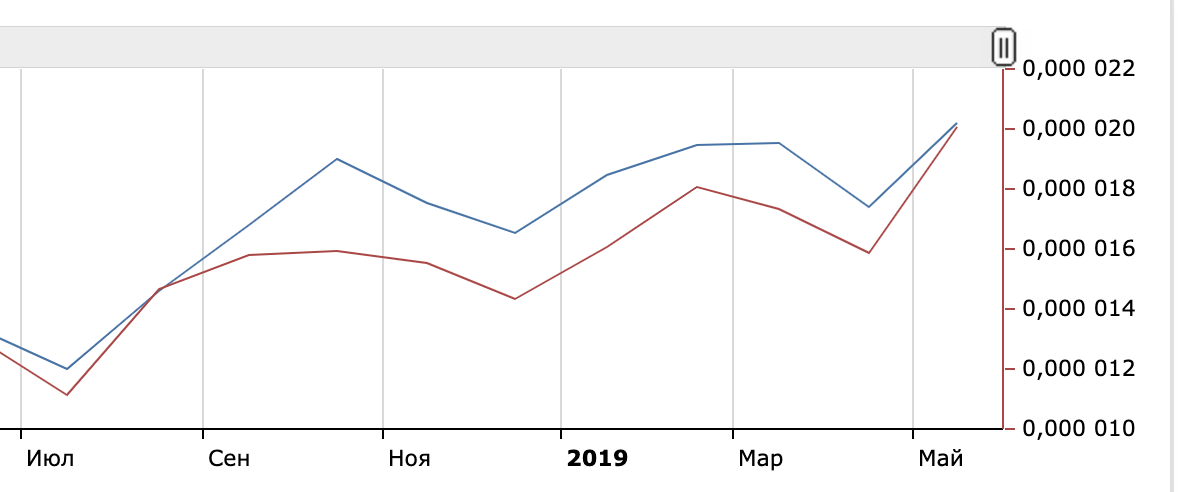
Why not have your own personal set?
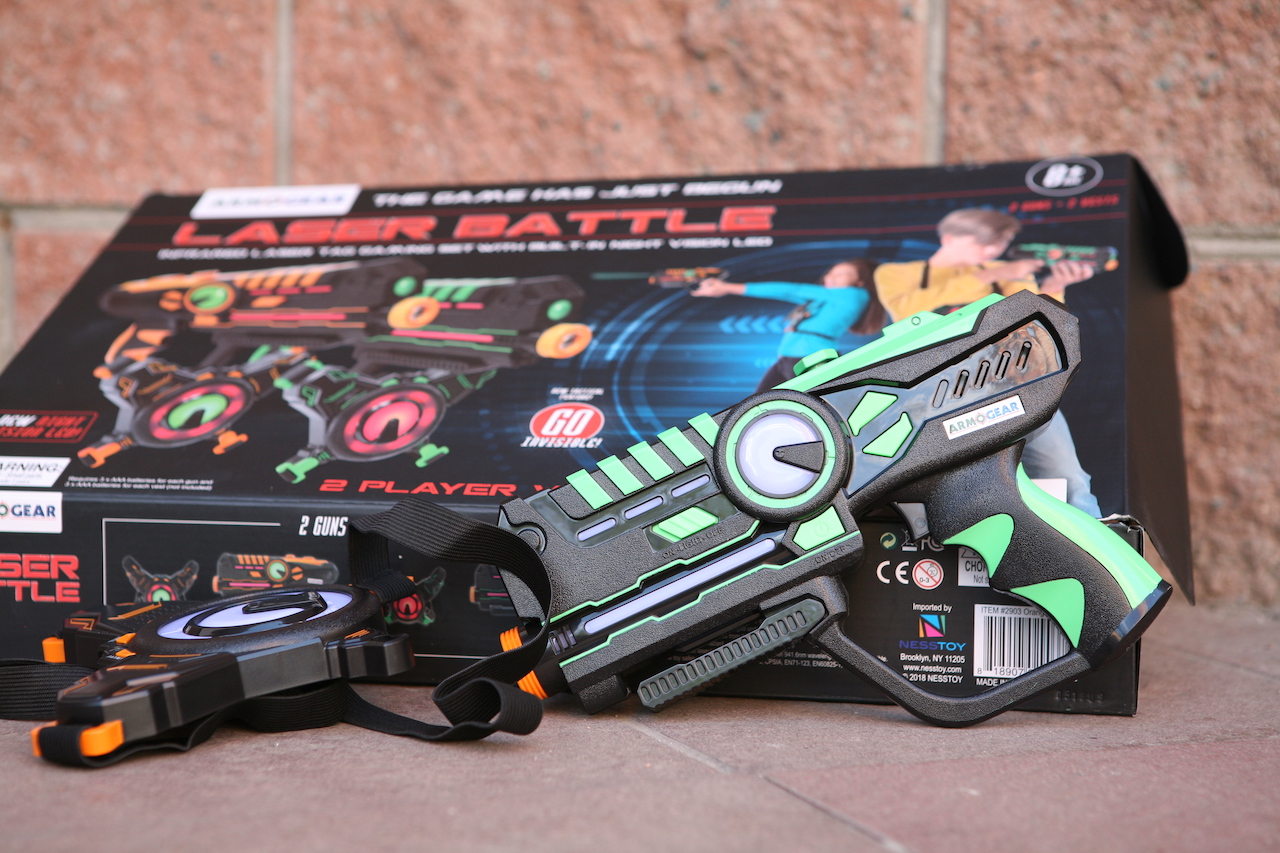
Today, numerous promotional materials urge you to play LaserTag at special venues as soon as possible, quests are arranged right in the yards of sleeping areas, a whole bunch of offers of different durations and price categories.

With such an abundance of offers, it is not obvious whether it is necessary to buy your personal Laser Tag for individual use, as far as it is appropriate? Another thing is that to get together with friends, recruit a team, agree with everyone, come, shoot, leave - also a whole quest even before the quest.
So a personal laser war game is quite a good idea. And such sets are in stockArmoGear . And they seemed cool to us.
There is a choice for two or four players. They differ only quantitatively, so let's talk about sets on the example of a double set.
The set consists of two elements: tags (tag) and a gun.
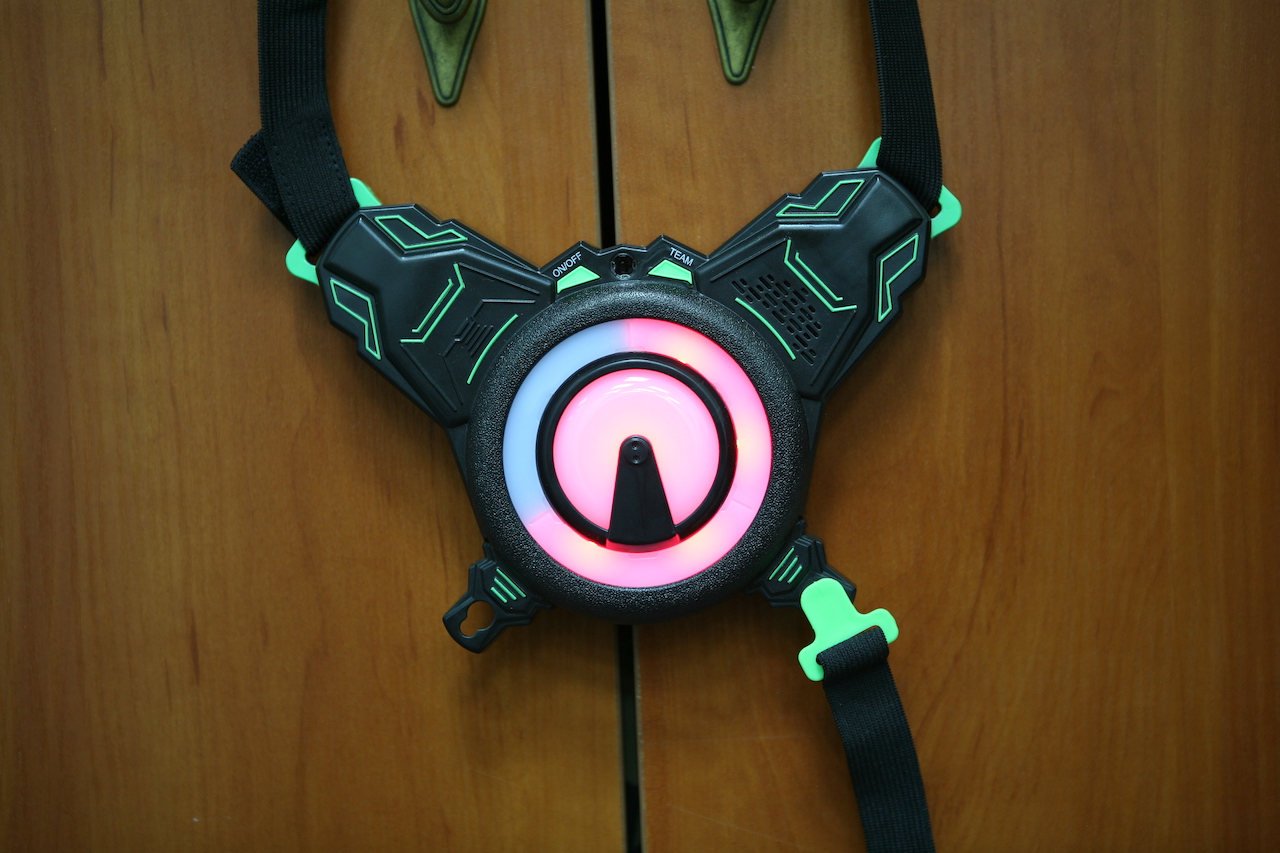
Such a mark is put on the player’s chest and is programmed with the “Team” button on the color of the team for which he will play. She also has an on-off button and a speaker that alerts with a sound signal that a player has been hit. This is also indicated by light vibration.
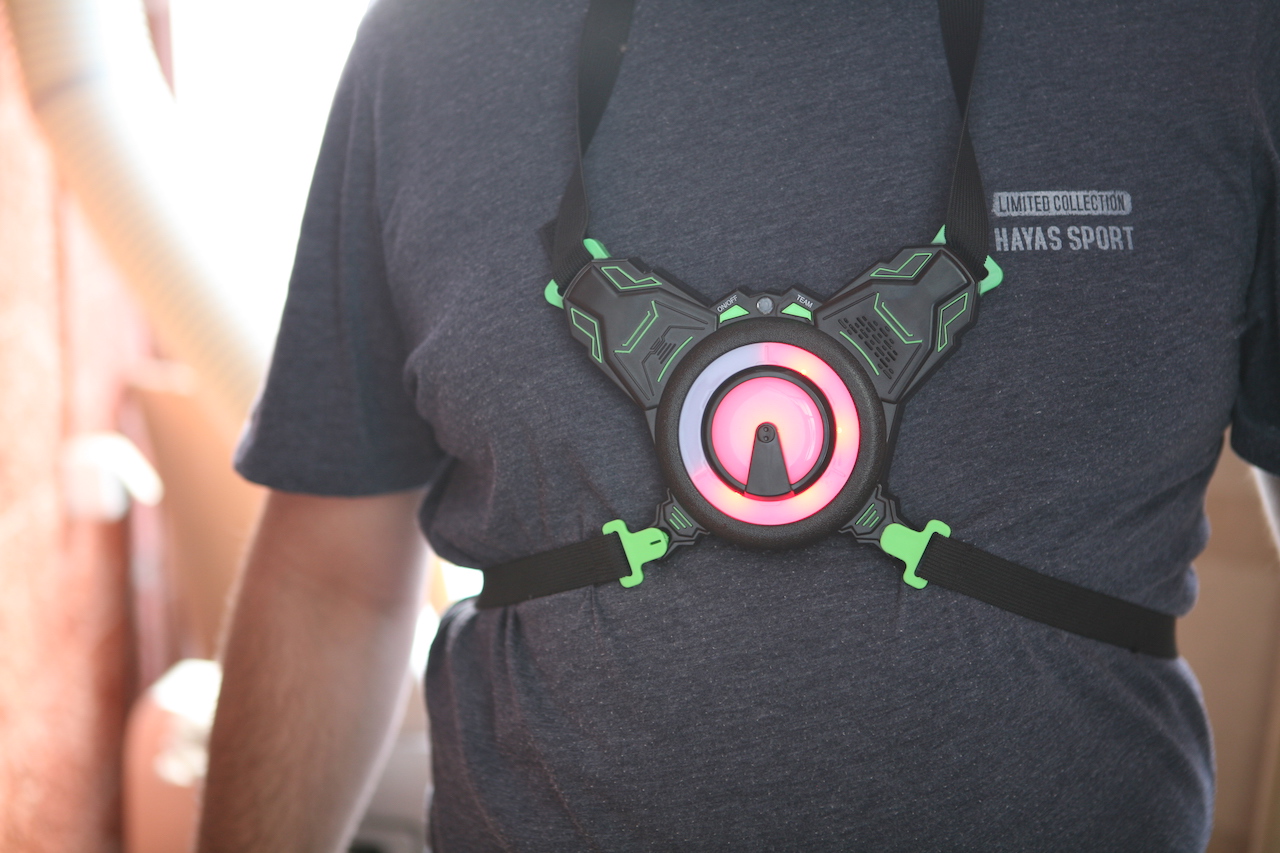
On the chest, it all looks very “Tonistarkovskim”, but does not interfere with movement. The only thing you need to pay attention to is that the belts are not adjustable. And if they somehow stretch out onto an adult, then they will have to be sacked onto a child.
The indication around the central diode is divided into three parts. For each shot, a certain percentage of life will be taken away, and after all three strips have run out, the player will hear Game Over.
The second main element is an infrared gun.
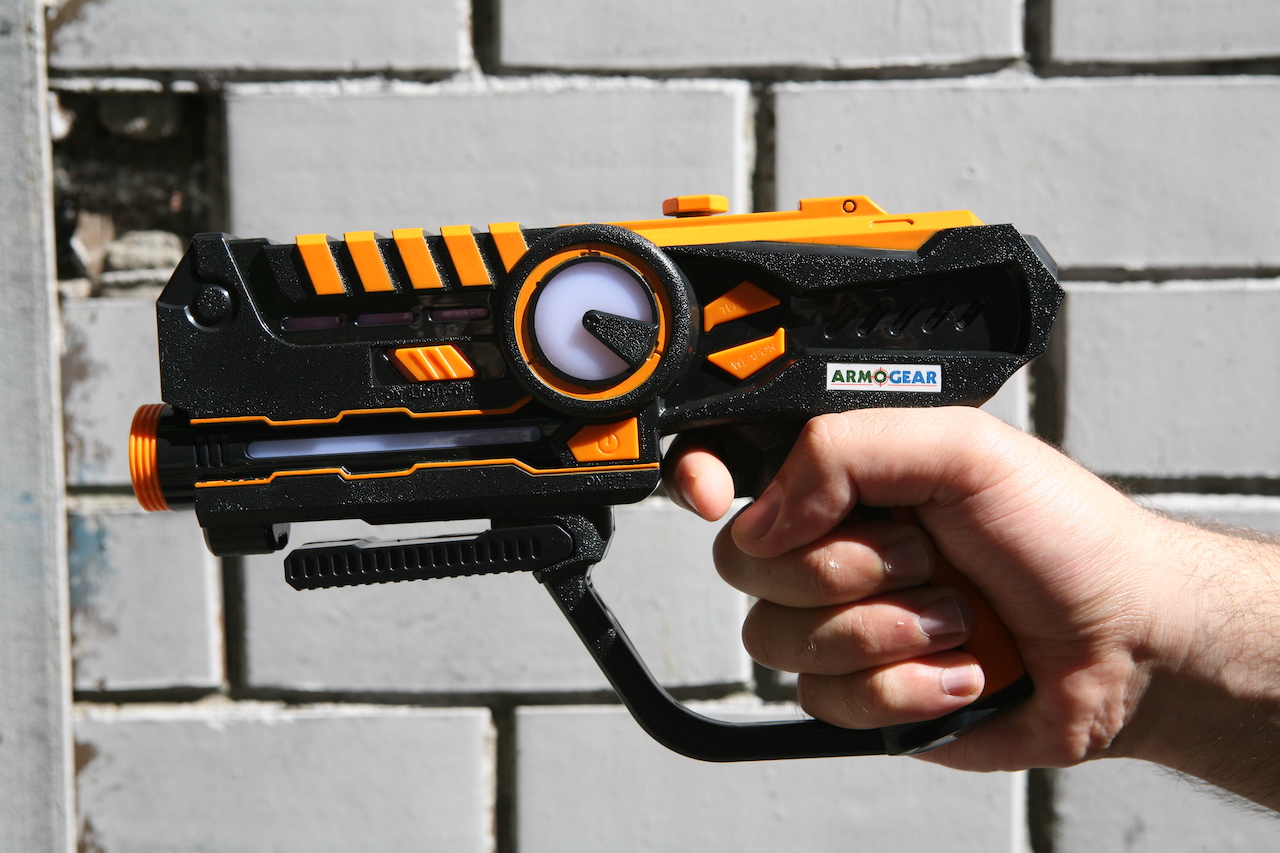
It is made quite simply, from plastic. It has several control buttons - on / off, command selection, "change" weapons. Here, it is understood that you can change the audio accompaniment: single shot, turn.
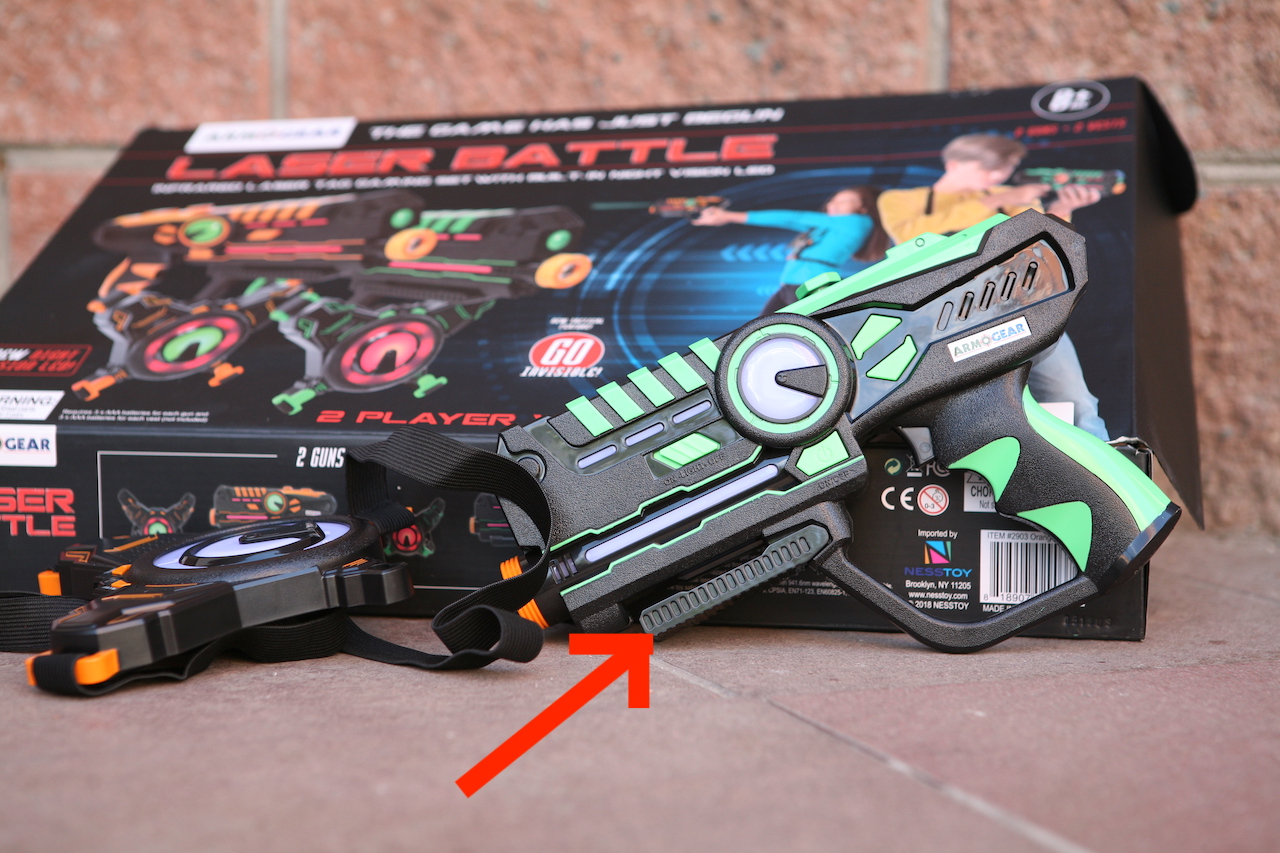
Lower arm - reload. The cartridges here realistically sooner or later end. And he, with a slightly longer hold, activates the "invisibility" mode: the lights on the blaster go out.
The process itself is quite simple: you need to turn on both devices, adjust them so that the colors on the chest and on the gun match. The second player selects other colors, and then both begin to dodge and aim.
As soon as the first Game Over sounds, the game can be restarted again by turning the devices off and on again. The process can be described as quite fast, funny, painless, unlike the nearest street alternative to Paintball. And not easily soiled.
The laser tag, when it first appeared in the 70s, could be described as a military simulator inspired by Star Wars, then it was positioned as a new sport. In general, there wasn’t a lot of “toy” here, and some players ought to have some skills: dexterity, dexterity, accuracy.
They tried to take this into account in the current version. For example, the “spread” of bullets is small. With a distance of just less than half a meter, you will no longer hit the enemy, and given that this all happens at a working distance of up to 45 meters, the situation really gets complicated.
The only thing that seems to be a bit of a simplification is the number of tags - it’s alone here. Of course, to take out the enemy, one shot is not enough, but still. You need to shoot at the same point. This complicates the process somewhat, because there is no particularly super-smart strategy to sneak up on the side or behind: you will face the enemy face to face.
Here, for example, is a variant of equipment:

Here you can shoot in the shoulder, injure the enemy, do it from an unexpected place. But in our sets we have only “Tony-Stark-style”: there is a risk that sooner or later the whole game will come down to a regular cowboy shoot-out.
One way or another, we liked the first experiments. At home, from around the corner or in the yard, it is quite possible to pass some time. The only difference is that the diodes are not so bright, and it is difficult to understand how crippled the enemy is on the street, especially from afar.
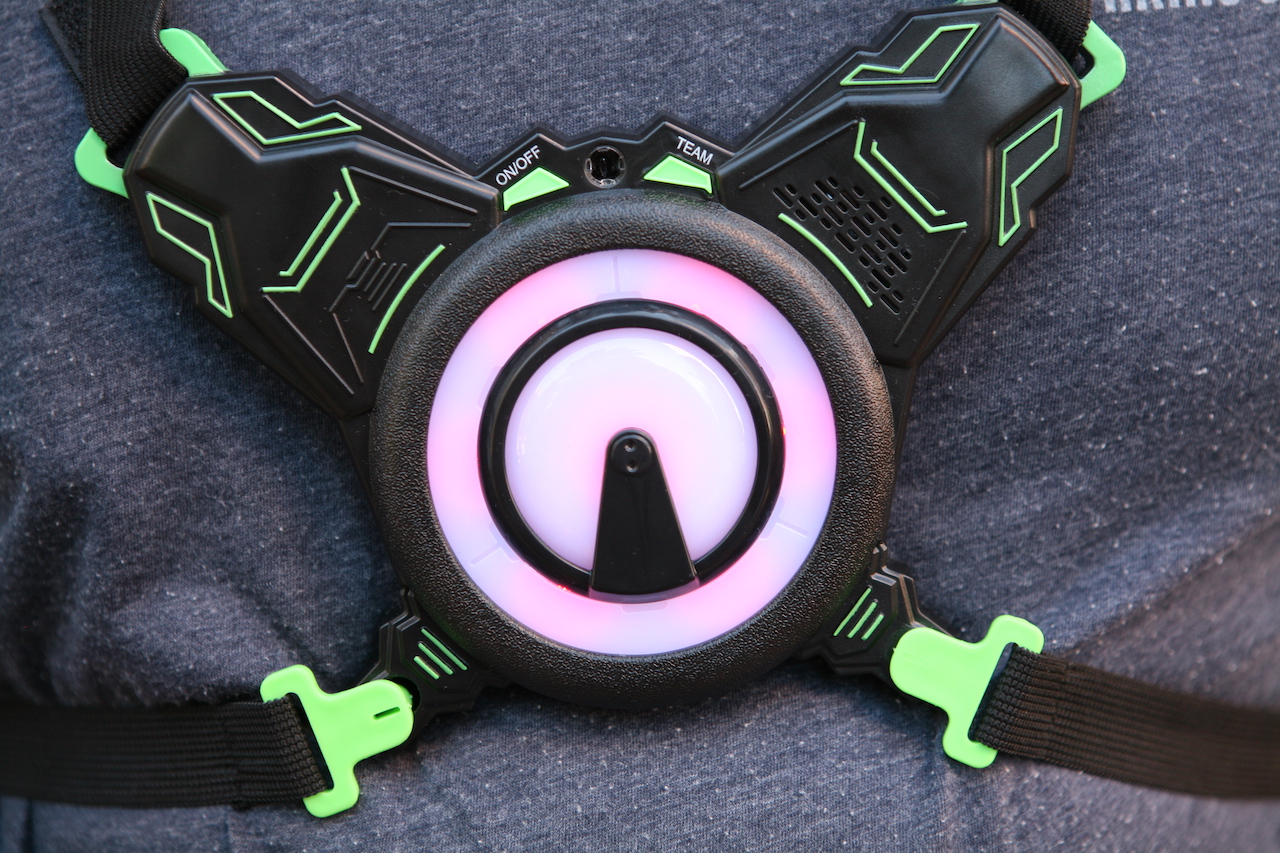
What is missing here is the batteries - they are not included. Each device runs on 3 AAA, so you need to stock up on twelve little pink batteries to start the game. You can buy sets in our store.

Why not have your own personal set?

Today, numerous promotional materials urge you to play LaserTag at special venues as soon as possible, quests are arranged right in the yards of sleeping areas, a whole bunch of offers of different durations and price categories.

With such an abundance of offers, it is not obvious whether it is necessary to buy your personal Laser Tag for individual use, as far as it is appropriate? Another thing is that to get together with friends, recruit a team, agree with everyone, come, shoot, leave - also a whole quest even before the quest.
So a personal laser war game is quite a good idea. And such sets are in stockArmoGear . And they seemed cool to us.
There is a choice for two or four players. They differ only quantitatively, so let's talk about sets on the example of a double set.
The set consists of two elements: tags (tag) and a gun.

Such a mark is put on the player’s chest and is programmed with the “Team” button on the color of the team for which he will play. She also has an on-off button and a speaker that alerts with a sound signal that a player has been hit. This is also indicated by light vibration.

On the chest, it all looks very “Tonistarkovskim”, but does not interfere with movement. The only thing you need to pay attention to is that the belts are not adjustable. And if they somehow stretch out onto an adult, then they will have to be sacked onto a child.
The indication around the central diode is divided into three parts. For each shot, a certain percentage of life will be taken away, and after all three strips have run out, the player will hear Game Over.
The second main element is an infrared gun.

It is made quite simply, from plastic. It has several control buttons - on / off, command selection, "change" weapons. Here, it is understood that you can change the audio accompaniment: single shot, turn.

Lower arm - reload. The cartridges here realistically sooner or later end. And he, with a slightly longer hold, activates the "invisibility" mode: the lights on the blaster go out.
The process itself is quite simple: you need to turn on both devices, adjust them so that the colors on the chest and on the gun match. The second player selects other colors, and then both begin to dodge and aim.
As soon as the first Game Over sounds, the game can be restarted again by turning the devices off and on again. The process can be described as quite fast, funny, painless, unlike the nearest street alternative to Paintball. And not easily soiled.
The laser tag, when it first appeared in the 70s, could be described as a military simulator inspired by Star Wars, then it was positioned as a new sport. In general, there wasn’t a lot of “toy” here, and some players ought to have some skills: dexterity, dexterity, accuracy.
They tried to take this into account in the current version. For example, the “spread” of bullets is small. With a distance of just less than half a meter, you will no longer hit the enemy, and given that this all happens at a working distance of up to 45 meters, the situation really gets complicated.
The only thing that seems to be a bit of a simplification is the number of tags - it’s alone here. Of course, to take out the enemy, one shot is not enough, but still. You need to shoot at the same point. This complicates the process somewhat, because there is no particularly super-smart strategy to sneak up on the side or behind: you will face the enemy face to face.
Here, for example, is a variant of equipment:

Here you can shoot in the shoulder, injure the enemy, do it from an unexpected place. But in our sets we have only “Tony-Stark-style”: there is a risk that sooner or later the whole game will come down to a regular cowboy shoot-out.
One way or another, we liked the first experiments. At home, from around the corner or in the yard, it is quite possible to pass some time. The only difference is that the diodes are not so bright, and it is difficult to understand how crippled the enemy is on the street, especially from afar.

What is missing here is the batteries - they are not included. Each device runs on 3 AAA, so you need to stock up on twelve little pink batteries to start the game. You can buy sets in our store.
